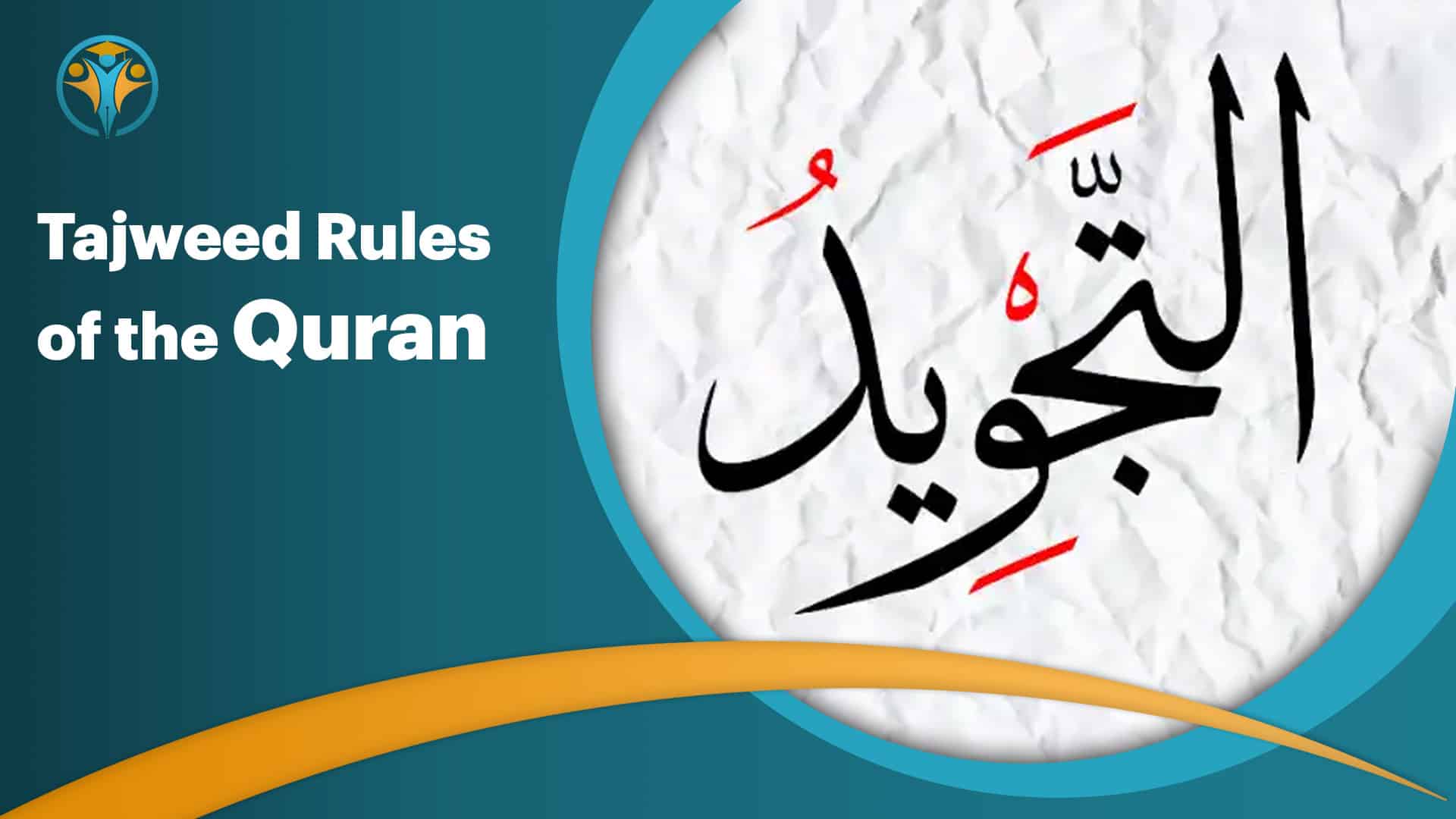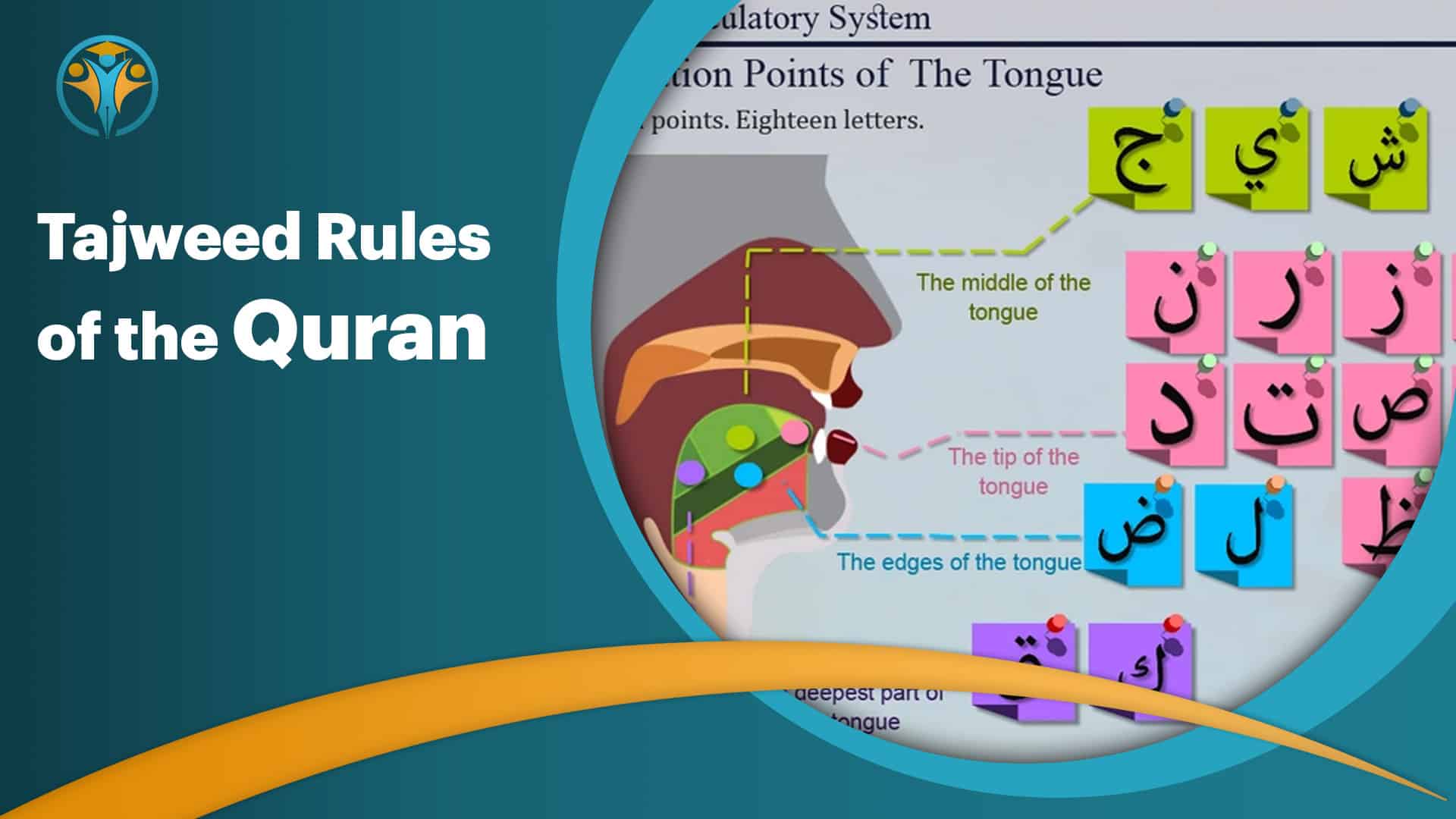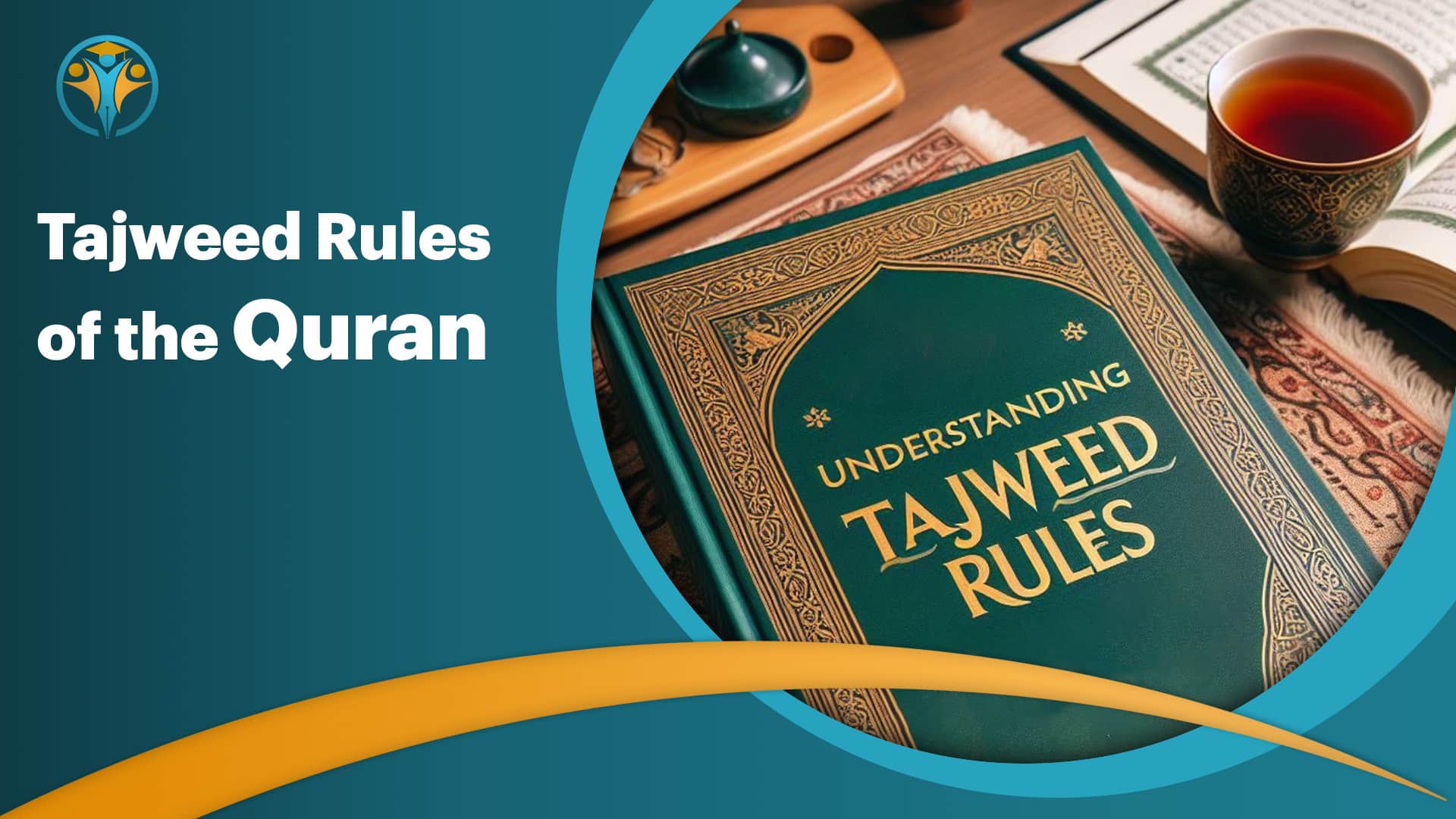
Tajweed Rules of the Quran: A Complete Guide for Beginners
Tajweed rules of the Quran are a set of rules that govern the correct pronunciation, articulation, and intonation of Arabic letters during Quran recitation.
Tajweed rules of the Quran are essential for anyone seeking to recite the Quran with accuracy and devotion.
These rules were applied and taught by Prophet Muhammad and help preserve the original meaning of the Quran’s words as revealed by Allah.
By mastering Tajweed, learners enhance their understanding of the Qur’an, avoid pronunciation errors, and connect more deeply with the message of the Quran.
Whether you’re a beginner or looking to improve your recitation Quran, learning Tajweed is a vital step in your spiritual journey.
This article is for beginners and seasoned learners alike who wish to explore the art of Quranic recitation with proper pronunciation, meanings, and manners.
Whether you’re looking to memorize the Quran, improve your Arabic recitation Quran, or simply enhance your connection with the holy book (Quran), Comprehension of Tajweed is the key.
Let’s discover everything from the definition of Tajweed to its rules, symbols, and the best online courses.

What Is Tajweed?
Tajweed, an arabic term (تجويد), comes from the Arabic root word “جَوَّدَ”, which means “to beautify” or “to make better.”
In the context of the Qur’an, Tajwīd or Tajweed refers to the rules governing the pronunciation of letters when reciting the Qur’an.
These rules ensure that the words of the Holy Qur’an are recited as they were revealed to the Prophet Muhammad (PBUH) through Jibreel (AS).
The goal is to recite the Qur’an in a way that is both correct and beautiful, while maintaining the meaning, context, and spirit of the words.
Tajweed involves mastering makharij (the correct articulation points) and sifat (the characteristics of letters), ensuring each Arabic letter is pronounced properly.
It’s not just about rules, it’s about preserving the sacredness, clarity, and accuracy of the divine message.
The History of Tajweed Rules
The science of Tajweed began during the time of the Prophet Muhammad (PBUH).
As the Qur’an was revealed, the Prophet (peace be upon him) recited it with precise pronunciation and articulation.
His companions (Sahabah) memorized and transmitted it orally, preserving both the words and their correct sounds.
With Islam spreading to non-Arabic-speaking regions, the need to document Tajweed rules became urgent.
Scholars began to compile books to guide learners in proper Quranic recitation.
The development of Tajweed includes clear guidelines, terminology, and examples of correct and incorrect pronunciation.
These rules were not innovations; they were codified to preserve what Muhammad (PBUH) practiced.
Tajweed is taught globally through Qur’an schools, online academies, and private Quran teachers, helping students apply these principles effectively.
Important Tajweed Rules of the Quran
Learn recitation Quran with Tajweed rules.
Mastering the Tajweed Rules of the Quran involves learning a set of practical rules that govern the way each Arabic letter is pronounced in various contexts.
Below is a breakdown of the most essential Tajweed rules every learner should know for Quranic recitation correctly:
-
Noon Saakinah and Tanween in the Tajweed Rules of the Quran
These apply when a noon saakin or sakinah (نْ) or tanween (ــًــٍــٌ) appears before a specific letter:
- Izhaar (إظهار): Clear pronunciation of the noon or tanween (letters: ء هـ ع ح غ خ)
- Idghaam (إدغام): Merging the sound (letters: ي ن م و ل ر)
- With ghunnah (nasal sound): ي ن م و
- Without ghunnah: ل ر
- Iqlab (إقلاب): Changing noon into meem before ب
- Ikhfa (إخفاء): Hiding the noon/tanween sound with nasalization (15 letters)
-
Meem Saakinah in the Tajweed Rules of the Quran
Tajweed Rules applied when meem saakin and sakinah (مْ) are followed by:
- Rule 1- Izhar Shafawi: Clear pronunciation with all letters except ب and م, to involves pronouncing sounds clearly and distinctly. Mastery of this rule requires faithful adherence to correct pronunciation.
- Tajweed Rule 2- Idgham Shafawi: Merging meem into meem (م + م)
- Tajweed Rule 3- Ikhfa Shafawi: Hiding meem before ب with nasal sound
-
Qalqalah (Echoing Sound)
Applied to the letters ق ط ب ج د when they are sukooned or appear at the end of a word. This creates a light echo sound.
-
Rule Madd (Prolongation)
Madd refers to the elongation of sounds:
- Madd Tabee’i – Natural madd, 2 counts
- Madd Muttasil – Connected Madd, 4-5 counts
- Madd Munfasil – Separated, 4-5 counts
- Madd Arid Lissukoon – Occurs when stopping at a word, 2-6 counts
- Madd Lazim – Compulsory, prolonged 6 counts
-
Heavy and Light Letters (Tafkheem and Tarqeeq)
- Heavy letters: خ ص ض غ ط ق ظ
- Light letters: All others
- Special cases include ر (ra) and ل (lam), which change depending on the surrounding vowels.
-
Ghunnah
A nasal sound that lasts for 2 counts, typically used in idgham, ikhfa, and meem/noon mushaddad.
-
Rules of Stopping (Waqf)
These rulings help preserve meaning and flow:
- Sakt – A brief pause without breath
- Waqf Taam – Full stop where meaning is complete
- Waqf Kafi – Adequate stop
- Waqf Qabeeh – Improper stop that distorts meaning
-
Other Essential Rules
- Makharij and Sifaat – Proper articulation points and characteristics
- Hamzatul Wasl vs. Hamzatul Qat’
- Tajweed of isti’aathah and basmalah at the start of recitation.
Each rule enhances the clarity and meaning of the Qur’an.
Helping learners read, recite, and understand the holy Quran correctly and respectfully.

Quran Symbols of Tajweed Rules of the Quran
To make the Tajweed Rules of the Quran easier for learners, many modern Quran Mushafs use color-coded symbols that highlight where and how the Tajweed Rules of the Quran apply.
These symbols act as a visual guide to help with proper recitation:
- Red: Madd (elongation)
- Green: Ghunnah (nasalization)
- Blue: Qalqalah (echoing)
- Grey: Letters not to be pronounced
- Circle or Small’s: Denotes silent letters
- Waqf symbols (like ص, م, ج, لا): Mark recommended or prohibited stopping points
These symbols, when combined with proper instruction, help students apply Tajweed rules easily, even without deep theoretical knowledge.
They’re especially helpful for beginners, children, and non-Arabic speakers who rely on visual cues to their reading Quran.
Learn recitation Quran with Super Muslim Academy
Best Online Tajweed Rules Course
Tajweed Rules of the Quran are the correct or right way of reciting the Quran.
Tajweed Rules of the Quran cover the guide on how the Arabic alphabet should be pronounced, places to pause, and stops to understand the tajweed rules and correct their recitation Quran.
Many learners are turning to online platforms to study the Tajweed Rules of the Quran from the comfort of their homes.
Among the leading platforms, Super Muslim stands out as one of the best for learning Tajweed rules effectively and interactively.
Learn with the best online Tajweed course offers expert Quran teachers and interactive practice for reading and recitation the Quran.
Our Academy provides personalized instruction, flexible schedules, and certified programs, making it easy for students of all ages to learn basic Tajweed rules effectively from home.
Why choose Super Muslim Academy to learn the Tajweed Rules of the Quran?
Comprehensive Curriculum: From basic principles to advanced application, courses are designed for all levels.
Qualified Teachers: learn Tajweed Rules of the Quran with trained in Quranic sciences, Tajweed, and Qira’at, many are Al-Azhar University certified.
Interactive Lessons: Live 1-on-1 sessions, quizzes, and recorded feedback to help improve pronunciation and recitation skills.
Flexible Scheduling: Choose a schedule that suits your lifestyle, whether you’re a student, parent, or working adult.
Programs for Kids: Tajweed Rules of the Quran made fun and simple with stories, color-coded Mushaf Quran, and games.
Certificates and Ijazah: Complete the course and earn certified recognition of your learning Quran with Tajweed online.
Whether you’re struggling with idgham, want to perfect your ghunnah, or need help understanding the rules of noon and meem saakinah, Super Muslim Academy provides a step-by-step guide to help you master Tajweed rules.

Learn to read the Quran with Tajweed Rules:
To learn to read the Quran with Tajweed Rules of the Quran is essential for respectful Quran recitation.
Tajweed rules refer to the set of rules that govern the pronunciation of each letter, ensuring that every word in the Qur’an is recited correctly.
These rules cover everything from basic concepts like saakin and sakinah letters to advanced applications such as idghaam and qalb.
Also, Noorani Qaida helps non-Arabic speaking students understand the rules of Tajweed.
Paying attention to these details helps learners understand the linguistic characteristics and proper application of the Tajweed Rules of the Quran.
Under the guidance of a qualified teacher, students can discover the beauty of Quranic reading.
Learn how each spoken sound is shaped, following the common guidelines found in the renowned Tajweed course.
This structured approach ensures that the recitation is both accurate and spiritually uplifting.
Whether you’re a beginner or revisiting the Qur’an, learning Tajweed rules is a simple and effective way to enhance your connection with the Holy Qur’an.
Conclusion
Tajweed Rules of the Quran are not just a set of rules; it is the heart and soul of Quranic recitation.
It ensures the Qur’an is recited as it was revealed, preserving its meaning and spiritual impact.
From understanding the makharij of letters to applying rules like qalqala, idghaam, and madd, every detail plays a part in perfecting the recitation.
With the help of Super Muslim Academy, even beginners can unlock the Tajweed Rules of the Quran and begin reciting the Qur’an with confidence and precision.
Take the next step in your journey—learn, apply, and recite the Qur’an correctly, the way it was meant to be recited.



